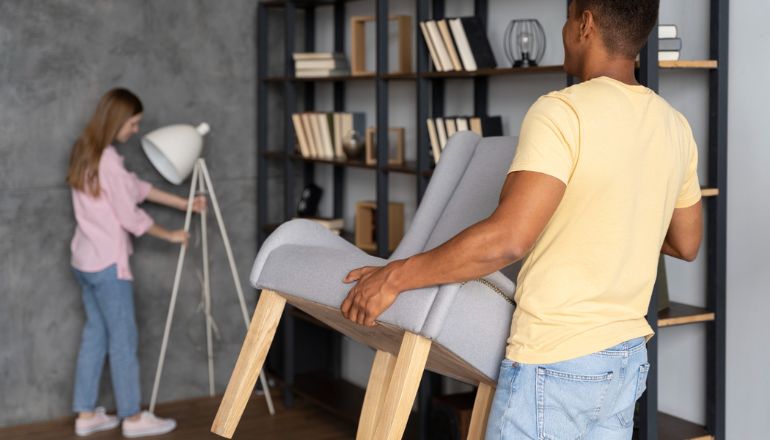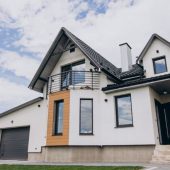Hard Loft vs Soft Loft: Which One Fits Your Style?

When it comes to choosing the perfect living space, the debate between hard loft vs soft loft is one that many urban dwellers face. Both options offer unique benefits, but understanding the key differences can make all the difference in finding a home that truly fits your style and needs. In this guide, we’ll break down the features, pros, and cons of each, helping you make an informed decision that aligns with your lifestyle and preferences.
What is a Hard Loft?
A hard loft refers to a type of living space that has been converted from a commercial or industrial building, typically maintaining its raw, unfinished aesthetic. These lofts often feature elements like exposed brick, high ceilings, large windows, and open floor plans. The design emphasizes a utilitarian, minimalist feel while preserving the original architecture of the building.
Features of Hard Lofts
Hard lofts are defined by several distinctive features that highlight their industrial origins:
- Exposed Architecture: Hard lofts often retain original architectural elements such as exposed brick walls, steel beams, and concrete floors.
- Open Layout: The layout is typically open-plan, with few interior walls, providing a spacious and airy environment.
- Industrial Aesthetic: These spaces often embrace an industrial style, with large windows, unfinished surfaces, and a raw, unpolished appearance.
- High Ceilings: Many hard lofts feature high ceilings, which contribute to the feeling of openness and help showcase the building’s original industrial character.
Examples of Hard Loft Buildings
Hard lofts can be found in a variety of repurposed buildings, each bringing its own unique charm:
- Factory Conversions: Many hard lofts are created by converting old factories into residential spaces, maintaining the original materials and structure.
- Warehouse Conversions: Similar to factories, warehouses are often transformed into lofts, featuring large open spaces, high ceilings, and industrial features.
- Former Commercial Buildings: Some hard lofts come from old office buildings, with elements like open floor plans and large windows, maintaining the historic character of the original structure.
What is a Soft Loft?
A soft loft combines the open, spacious layout of a hard loft with more refined and modern finishes. While it often retains elements like high ceilings and large windows, soft lofts are characterized by their updated features, such as smoother walls, polished floors, and more contemporary design elements. These lofts offer a blend of industrial charm and modern luxury.
Features of Soft Lofts
Soft lofts maintain some of the hallmark features of hard lofts but with a more polished, livable touch:
- Contemporary Finishes: Unlike hard lofts, soft lofts often feature more refined materials such as smooth walls, polished floors, and sleek fixtures.
- Open Layout: Much like hard lofts, soft lofts have an open floor plan, offering spacious and flexible living areas.
- Modern Design: These lofts integrate industrial elements with modern design sensibilities, often incorporating high-end appliances, minimalist decor, and advanced technology.
- Comfortable Living: Soft lofts prioritize comfort and functionality, providing a more traditional sense of home while still retaining the raw aesthetic of a loft.
Where to Find Soft Lofts
Soft lofts can be found in areas with a blend of urban development and modern residential living. These lofts are typically located in:
- Newer Developments: Many soft lofts are built as part of new residential complexes or developments designed to offer modern living in an industrial-style environment.
- Converted Buildings: Some soft lofts are located in renovated buildings, where the original industrial features have been updated with modern finishes.
- Urban Neighborhoods: Soft lofts are often found in trendy, up-and-coming urban neighborhoods, where old warehouses or factories are repurposed for residential use.
Hard Loft vs Soft Loft: Key Differences
When comparing hard loft vs soft loft, several key differences emerge, from their architectural style to the level of maintenance required. Understanding these differences can help you decide which type of loft best fits your needs and lifestyle.
Architecture and Design
The design of each loft type is a primary distinguishing feature:
- Hard Loft: Typically retains the industrial character of its original building, with raw elements like exposed brick, steel beams, and concrete floors. The aesthetic is minimalist and utilitarian, often with an unfinished or rugged look.
- Soft Loft: Combines the open, airy design of a hard loft with more modern finishes, like polished floors, smooth walls, and sleek fixtures. While the layout remains open, soft lofts often offer a more refined and comfortable atmosphere with a contemporary touch.
Maintenance and Age of the Building
The age and upkeep of the building play an important role in the decision-making process:
- Hard Loft: Often comes from older buildings such as factories or warehouses, which may require more maintenance due to their age and raw construction. Exposed materials can demand extra care and attention.
- Soft Loft: Usually found in newer developments or renovated buildings where modern systems and finishes are installed. This means that soft lofts generally require less maintenance and have more modern amenities, making them easier to maintain.
Pricing and Affordability
Cost is another significant factor when choosing between a hard loft and a soft loft:
- Hard Loft: Due to their unique architecture and location in repurposed industrial buildings, hard lofts are often priced higher in trendy, urban areas. However, the pricing can vary depending on the building’s condition and the location.
- Soft Loft: Soft lofts are generally priced similarly or slightly higher than hard lofts, particularly if they are located in newly developed or upscale neighborhoods. The modern finishes and new construction often contribute to a higher price tag, though they may offer better value in terms of long-term maintenance and energy efficiency.
Hard Loft vs Soft Loft: Pros and Cons
When deciding between a hard loft and a soft loft, it’s important to consider the benefits and drawbacks of each. Here’s a breakdown of the pros and cons to help you make an informed decision.
Advantages of Buying a Hard Loft
Hard lofts offer several unique benefits, especially for those who appreciate character and open spaces:
- Distinctive Architecture: Hard lofts feature industrial elements like exposed brick, steel beams, and high ceilings, which provide a unique aesthetic not found in standard apartments.
- Spacious Layout: The open-plan design and high ceilings give hard lofts a feeling of expansiveness, ideal for those who prefer large, airy living spaces.
- Authentic Charm: Many hard lofts are in historic buildings, giving them a sense of history and character that newer spaces may lack.
- Investment Potential: Due to their location in trendy urban areas and unique design, hard lofts can be a good long-term investment.
Disadvantages of Buying a Hard Loft
However, there are some challenges to consider when purchasing a hard loft:
- Higher Maintenance: Older industrial buildings often require more maintenance, from structural repairs to updating electrical and plumbing systems.
- Outdated Features: Hard lofts may not have modern amenities or the level of comfort found in newer buildings, such as energy-efficient appliances or updated bathrooms.
- Higher Cost: The combination of location and uniqueness can make hard lofts more expensive, especially in high-demand urban areas.
- Privacy Issues: The open layouts in hard lofts may not offer as much privacy as more traditional living spaces with separate rooms.
Advantages of Buying a Soft Loft
Soft lofts come with their own set of advantages, particularly for those seeking modern comforts:
- Modern Finishes: Soft lofts often include sleek, contemporary design elements like polished floors, smooth walls, and high-end fixtures.
- Energy Efficiency: These lofts tend to have better insulation, more efficient heating and cooling systems, and modern appliances that help lower energy costs.
- Low Maintenance: As soft lofts are typically newer or renovated, they require less maintenance compared to hard lofts.
- Move-in Ready: Soft lofts are often designed to be comfortable and functional from day one, with modern amenities that don’t require much work to settle in.
Disadvantages of Buying a Soft Loft
Despite their appeal, soft lofts may not be the ideal choice for everyone due to certain drawbacks:
- Higher Price: The modern finishes and construction often come with a higher price tag compared to hard lofts, especially in newly developed or upscale areas.
- Less Character: While soft lofts maintain an industrial style, they may lack the raw, authentic charm that comes with the older, historical elements found in hard lofts.
- Smaller Spaces: Soft lofts, particularly in newer developments, may have a more compact design, focusing on maximizing space rather than offering the large, open floor plans that hard lofts provide.
If you’re considering a loft apartment, make sure to check out our detailed article on the Pros and Cons of Living in Loft Apartments to discover all the insights you need before making your decision.
How to Choose Between a Hard Loft and a Soft Loft
Choosing between a hard loft and a soft loft depends on several factors, including your lifestyle, budget, and long-term goals. Here are key elements to consider before making your decision.
Lifestyle Factors to Consider
Your lifestyle plays a significant role in determining which type of loft suits you best:
- Space and Layout: If you prefer a more open, industrial aesthetic with raw architectural elements, a hard loft might be the right choice. On the other hand, if you prefer a more polished and comfortable living space, a soft loft offers the modern design and amenities you’re looking for.
- Comfort vs. Character: Hard lofts offer a distinctive, historical charm but may lack the comfort and modern conveniences that come with soft lofts, which are designed for contemporary living.
- Maintenance: Consider how much time and effort you’re willing to put into maintaining your living space. Hard lofts may require more upkeep due to their older infrastructure, whereas soft lofts are generally lower-maintenance with modern systems in place.
Budget and Investment Potential
Your financial situation and investment goals are also important when deciding between these two types of lofts:
- Initial Cost: Hard lofts, especially those in trendy urban areas, may come with a higher upfront cost due to their unique architecture and location. Soft lofts, with their modern finishes and energy-efficient designs, can also be pricey but might offer more value in terms of long-term maintenance.
- Long-Term Value: Hard lofts can offer excellent investment potential, especially if they are located in neighborhoods that are seeing growth. Soft lofts may also appreciate in value, particularly in newly developed or up-and-coming areas, but they tend to be more affordable initially, which might appeal to those with a tighter budget.
Additionally, if you’re weighing the differences between various types of living spaces, you might also be interested in a comparison of Condominium vs. Apartment to help with your decision-making process.
Final Verdict: Which Loft Type is Best for You?
Ultimately, the choice between a hard loft and a soft loft comes down to your personal preferences and priorities. Hard lofts offer a unique, industrial charm with open spaces and distinctive architecture, ideal for those who appreciate history and character. However, they often require more maintenance and may come with higher costs, particularly in trendy areas. Soft lofts, in contrast, provide a more polished, modern living experience with updated finishes and lower maintenance needs. While they can be more expensive upfront, they offer energy efficiency and convenience, making them a great option for those seeking comfort and ease.
Consider your lifestyle, budget, and long-term goals to decide which loft best fits your needs.













